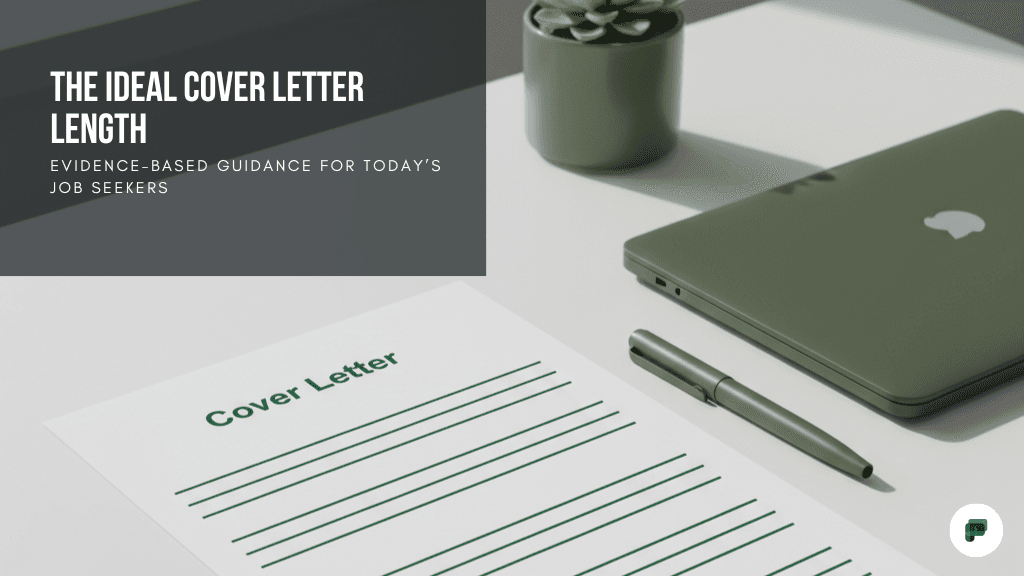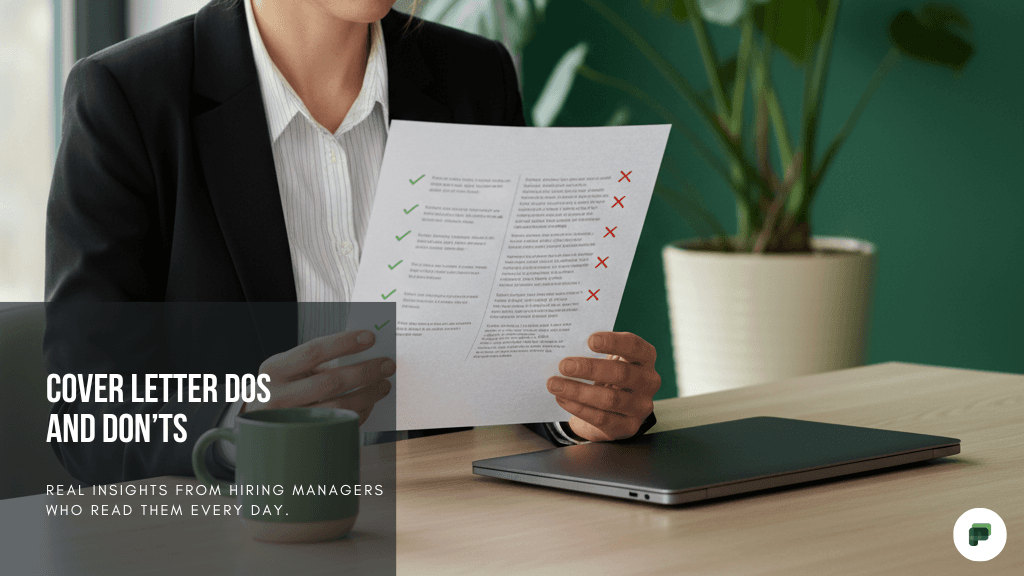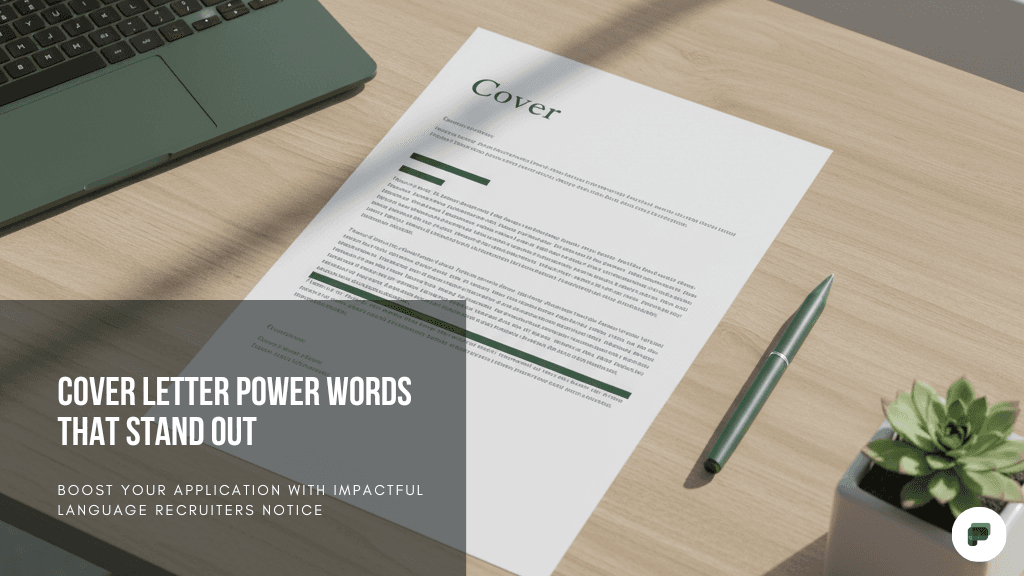The Perfect Cover Letter Length: What Research Says


Pranav Lakherwal
The Perfect Cover Letter Length: What Research Actually Reveals (And Why Most Job Seekers Get It Wrong)
Here's an uncomfortable truth: While you're agonizing over whether your cover letter should be 200 or 400 words, hiring managers are making decisions in under 10 seconds.
The real question isn't "how long should it be?"—it's "how quickly can you prove you're worth their time?"
At Prepzo.ai, we've analyzed thousands of successful job applications and synthesized recruitment research to cut through the noise. What we've discovered might surprise you: the "perfect" cover letter length has less to do with word count and everything to do with cognitive load theory and decision-making psychology.
Let's dive into what the data actually says—and how to leverage it for career success.
The Brutal Reality: Attention Economics in Hiring
Before we discuss optimal length, let's establish the playing field. Modern recruitment operates on attention economics—a zero-sum game where every second counts.
The Research Landscape:
- The Ladders' eye-tracking study: Recruiters spend an average of 7.4 seconds on initial resume review
- CareerBuilder's 2021 survey: 68% of hiring managers spend less than 2 minutes reviewing a complete application
- LinkedIn's Global Recruiting Trends: 76% of talent professionals report being overwhelmed by application volume
But here's where it gets interesting: cover letters actually receive more initial attention than resumes—an average of 12-15 seconds according to aggregated HR platform data. Why? Because they're inherently more scannable and provide immediate context.
The catch? That attention window closes fast. Exceed their cognitive processing capacity, and you've lost them entirely.
The One-Page Principle: Not Just a Rule, But Cognitive Science
The overwhelming consensus among recruitment professionals isn't arbitrary—it's rooted in how our brains process information.
The Data Speaks:
- 78% of hiring managers prefer cover letters under 250 words (Resume-Library, 2023)
- 91% consider anything over one page an immediate red flag (Indeed Hiring Lab)
- Average reading speed: 200-250 words per minute, but scanning speed is 3x faster
The Psychology Behind It: When faced with dense text blocks, the human brain triggers what psychologists call "cognitive overload." Hiring managers, processing dozens of applications daily, develop pattern recognition that favors easily digestible information.
Think of it this way: your cover letter isn't competing against other cover letters—it's competing against their mental fatigue.
The Goldilocks Zone: 150-250 Words of Pure Impact
Our analysis of successful applications reveals a sweet spot: 150-250 words, structured in 3-4 tight paragraphs.
Here's why this range works:
- Cognitive Processing: Can be fully absorbed in 30-45 seconds
- Scanning Friendly: Key information visible at a glance
- Memorable: Short enough for key points to stick
- Professional: Demonstrates communication efficiency
But—and this is crucial—word count is a proxy metric. What really matters is information density and relevance ratio.
The Architecture of Influence: Paragraph-by-Paragraph Breakdown
Paragraph 1: The Hook (30-40 words)
Skip the pleasantries. Lead with your strongest value proposition.
Weak: "I am writing to express my interest in the Software Engineer position..."
Strong: "Your recent TechCrunch feature on AI-driven personalization caught my attention—I've spent three years building similar systems that increased user engagement by 340%."
Paragraph 2: The Evidence (80-120 words)
One powerful example with quantified impact. This isn't resume repetition—it's storytelling with data.
Framework: Situation + Action + Measurable Result + Relevance to their needs
Paragraph 3: The Connection (40-60 words)
Demonstrate company research and cultural alignment. Show you understand their challenges and vision.
Paragraph 4: The Close (20-30 words) (Optional)
Professional, confident, forward-looking. No desperation, no generic pleasantries.
Context-Dependent Optimization: When Rules Bend (Slightly)
While the 150-250 word range holds for 95% of applications, context matters:
Early Career Professionals: Lean toward 150-200 words. Focus on potential and transferable skills.
Senior/Executive Roles: May extend to 300 words if discussing complex strategic initiatives, but maintain tight cover letter structure.
Highly Technical Roles: Brief technical context is acceptable, but avoid jargon overload.
Creative Industries: Personality can shine through, but clarity remains king.
Startup vs. Enterprise: Startups often prefer punchier, more direct communication; enterprises may appreciate slightly more formal structure.
The AI Advantage: Precision at Scale
Here's where Prepzo.ai transforms the game. Traditional advice tells you to "tailor every letter"—but who has time for that level of customization?
Our AI tools enable:
- Intelligent Personalization: Analyze job descriptions to identify key requirements and company values, then optimize your core message for maximum relevance
- Impact Optimization: Suggest stronger action verbs, quantified achievements, and compelling narrative structures
- Length Calibration: Automatically adjust content density while maintaining your authentic voice
- A/B Testing Insights: Learn which approaches generate higher response rates in your industry and role level. (Generating multiple cover letters tailored to different roles will give you better clarity on cover letter design and improve your odds of success)
The result? Personalized impact without the time investment—because your career deserves better than generic templates.
Common Length Mistakes That Kill Applications
- The Novella: 500+ words of life story. Shows poor judgment and disrespect for reader's time
- The Telegram: 2-3 sentences. Appears lazy and uninterested
- The Resume Repeat: Bullet-pointing achievements already listed elsewhere. Wastes precious real estate
- The Generic Template: Same length and structure for every application. Lacks authentic connection
- The Humble Brag Marathon: Endless self-promotion without connecting to employer needs
TL;DR: The Research-Backed Formula
- Sweet Spot: 150-250 words, 3-4 paragraphs
- Structure: Hook → Evidence → Connection → Close
- Focus: One powerful example with quantified impact
- Personalization: Company-specific insights, not generic enthusiasm
- Optimization: Leverage AI tools for precision and efficiency
- Format: Clean cover letter format with scannable structure
FAQ: The Questions That Actually Matter
Q: What if I have 15+ years of experience to showcase?
A: Curation beats comprehensiveness. Select your most relevant, impressive achievement that directly addresses their biggest challenge. Your cover letter is a movie trailer, not the full film.
Q: Should I mention salary expectations or availability?
A: Only if specifically requested. Otherwise, it's wasted word count that could be used for value demonstration.
Q: How do I stand out when following a "formula"?
A: The cover letter structure is consistent; the content is uniquely yours. It's like jazz—master the fundamentals, then improvise brilliantly within the framework.
Q: What about creative industries where personality matters?
A: Personality shines through word choice, tone, and insights—not length. A witty, insightful 200-word letter beats a rambling 500-word personality dump every time.
Q: How important is the subject line for email applications?
A: Critical but often overlooked. Format: "Application: [Position Title] - [Your Name] - [One Key Qualification]"
Q: How can AI tools help with cover letter optimization?
A: Modern career tools like Prepzo.ai's Cover Letter Generator can analyze job descriptions, suggest personalized content, and optimize for both ATS systems and human readers while maintaining the perfect length.
The Bottom Line: Quality Over Quantity, Always
The "perfect" cover letter length isn't about hitting a magic number—it's about maximizing signal while minimizing noise. In a world where attention is the scarcest resource, brevity paired with relevance becomes your competitive advantage.
Research consistently shows that hiring managers reward candidates who demonstrate respect for their time while delivering compelling value propositions. The 150-250 word range isn't a constraint—it's a forcing function that elevates your communication skills and strategic thinking.
Your next career move deserves better than guesswork. Leverage data-driven insights, embrace AI-powered career tools, and watch as your application response rates transform.
Because in the attention economy, the most concise story often wins. Don't dread cover letters. Ace them.
Ready to optimize your cover letters with research-backed strategies? Try Prepzo.ai's AI-powered career tools for personalized, length-optimized cover letters that get results.

Pranav Lakherwal
Related Articles

Writing Standout Cover Letters for Engineers
Learn why engineers should still craft cover letters, with frameworks, real examples, and tools to showcase impact effectively
Pranav Lakherwal

Cover Letter Dos and Don'ts: Advice from Hiring Managers
Master cover letter excellence through proven DO strategies while avoiding critical DON'T mistakes that eliminate candidates.
Pranav Lakherwal

Cover Letter Power Words That Make Your Application Stand Out
Power words transform ordinary cover letters into compelling professional narratives, find out how.
Pranav Lakherwal